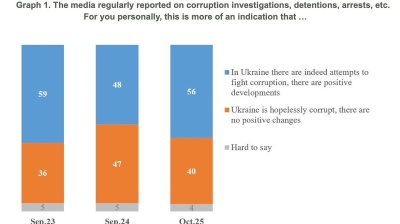The frozen wastes of Russia’s interior are melting. That’s a big problem for Russia. And it could be an even bigger problem for the planet. A large share of Russia’s oil, gas, diamonds and metals are produced in cities that sit on the permafrost. And thousands of kilometres of roads, rails and pipelines could sink into a bog, while some of the buildings and processing plants will simply fall over if the ground melts.
The climate crisis arrived in Russia this year and is going faster than elsewhere. Temperatures in northeastern Russia are rising two and half times faster than in the rest of the world. Few people live there but if Russia’s permafrost melts the economic cost could be astronomical.
Russia has 24 regions that are permanently frozen but only nine of those contain extensive infrastructure and cities. However, these regions are key to Russia’s economy, producing the bulk of its raw materials that account for almost half of the country’s GDP.

The main issue is that because the ground is so hard everything is built on piles driven into the ice. Even in the brief summers, which only last a month, typically only the first half metre of top soil melts, which is why the pine trees that blanket much of the taiga are only a metre or so tall; their roots can’t get very deep before hitting the concrete-like layer of ice.
If the permafrost melts it will cause billions of dollars worth of damage. A recent study by Dmitry Streletskiy tried to assess the impact of climate change on the fixed assets in Russia’s permafrost regions that was published in Environmental Research Letters and goes into a lot of detail.
While the population density of everything east of the Ural mountains – the formal end of Europe – is thin, there has actually been a fair amount of building done in the Asian part of Russia, mostly by the Soviets.
The total value of all these fixed assets – buildings, factories, pipelines, roads, etc. – in just the nine most at risk regions is $1.29 trillion, or about 17% of Russia’s entire fixed assets, estimates Streletskiy.
Of these assets about a sixth are in immediate danger from the subsidence of the ground if it melts, or just over $250bn worth, or around 7.5% of Russia’s GDP. And the cities are in more danger than the pipelines: in the coming decades about a fifth of this infrastructure and up to half of the housing in the permafrost regions need to be upgraded or rebuilt entirely.
The bottom line is that the worst affected regions will have to spend between 4% and 5% of their gross regional product on repairs and upgrades and the permafrost meltdown will shave another 1%-2% off Russia’s economic growth for decades to come.
And that is just the problems the Soviet-era cities are getting ready to face. The far bigger problem which is still largely being ignored is that, according to academic estimates, there is some 1 trillion tonnes of CO2 locked up in the permafrost – rotting prehistoric vegetation that has been frozen since the time of the dinosaurs. If the ground temperature reaches zero degrees then all that CO2 gas could be released in one go in about 30 years, or sooner, causing an unpredictable climate catastrophe.
Currently the ground temperature is about -3C but it is rising by about one degree a decade. A climate-changing gas time bomb is ticking down and will go off sometime in 2050, causing cataclysmic and irreversible damage if nothing is done to reduce emissions.
Accidents and Artic heat wave
The problems of melting permafrost arrived in Russia this summer, which saw the biggest ecological disaster in the country’s history.
The Kremlin declared a spill of diesel fuel at the power plant of Norilsk Nickel metals major in the Krasnoyarsk region in May a federal emergency.
Melting permafrost caused the collapse of pipelines connecting the CPH-3 combined power and heat plant (CHPP) with the decompressed fuel tank that released over 20,000 tonnes of oil products into two adjacent rivers and the soil.
The spill seeped through into one of the largest lakes in the Pyasino region, linked to the Kara Sea, in an environmental catastrophe. The government fined Norilsk $2bn as a contribution to the costs of the clean-up that is anticipated to take at least a decade.
The second accident was less dramatic and didn't cause any damage, but it is nonetheless a sign of things to come.
The TGK-1 power station on the Far Northwest coast near Murmansk reported on June 9 that two of its hydropower units were flooded after a wave of melted snow hit the power station. No serious damage was done, although the company's personnel were put on high alert, but experts say the event was a once-in-a-1,000-year occurrence.
Snow at the nearby Lovozero lake suddenly melted as an Arctic heat wave hit northern Russia. There are no commercial or residential buildings in the region and the power plant was built in a remote area, but if it happens again then the plant that supplies the region could be in danger.

Temperatures in the Far North of Russia hit a new all-time high as experts say that 2020 could be one of the five hottest years in recorded history.
On June 20 the Weather and Climate weather portal recorded a temperature of 38C in Verkhoyansk in the Sakha Republic in the centre of Russia – the coldest town in the world. In some places inside the Arctic Circle temperatures temporarily spiked to an unheard of 45C on occasions, according to other reports.
The previous record of 37.8C for highest temperature ever inside the Arctic Circle was set in Fort Yukon, Alaska, in June 1915, a record it shares with Verkhoyansk. Verkhoyansk holds the record for being the coldest place on earth with an all-time low of -67.8C and also holds the Guinness World Record for the highest recorded temperature range of 105C.
2020 is on course to becoming one of the five hottest years in recorded history.
Some like it hot and some not
There are 24 regions with permafrost but most of them are devoid of people or plants. And the temperatures and the extent of permafrost vary widely between them. But counter-intuitively, the temperatures in many of these regions are rising more than twice as fast as in the rest of the world.
Currently average temperatures are 5.3С above the 1951-1980 average, and have surpassed the previous record by a "massive" 1.9C, Berkeley Earth project lead scientist Robert Rohde said, as cited by the Guardian.
Russia has just been through its warmest winter for 130 years, with the local Muscovites complaining there was no snow in December and the Ukrainian capital of Kyiv was likewise bare of snow until very late into the winter.
Another study in 2007 estimated that a 1.5°C increase in mean annual air temperature (MAAT) could lead to the deformation of almost all foundations in the city of Yakutsk in Republic of Sakha. More recent assessments found that there will be a 5-20% decrease in bearing capacity of permafrost foundations in a dozens of Russian cities by the middle of this century due to climatic changes.

“A widespread reduction in permafrost bearing capacity throughout Russia is expected by mid-21st century,” Streletskiy’s study found. “However, the economic impact remains unknown, as costs related to permafrost degradation have not been fully integrated into climate change impacts assessments for Russia.”
In the nine regions that are going to be most affected by melting permafrost about 19% of all infrastructure and 54% of buildings will be affected, according to Streletskiy.
The nine regions include: Nenets Autonomous Okrug (NAO), Yamalo-Nenets Autonomous Okrug (YNAO), Khanty-Mansi Autonomous Okrug (KMAO), Komi Republic, Chukotka Autonomous Okrug (CAO), Krasnoyarsk Krai and Sakha Republic (Yakutia).
“Permafrost occupies nearly 65% of the territory of the Russian Federation, and profoundly affects the natural environment, traditional and non-traditional sectors of the economy, and socio-economic conditions of the Russian Northern and Eastern regions,” Streletskiy says.
“Despite having limited extent in the European part of Russia, permafrost is a very common phenomenon east of the Ural Mountains. There are several large Russian administrative regions where permafrost underlies a significant portion of the regional territory,” he adds.
Several regions, such as Chukotka that used to be governed by Russian oligarch Roman Abramovich, and Republic of Sakha, which is home to the giant Mirny diamond mine among other things, are almost entirely located on permafrost, but the extent to which a region is frozen varies widely.
At the other end of the scale some 10% of the Arkhangelsk Oblast is permafrost, but the region contains mostly rural villages with traditional subsistence economies and lacks major infrastructure.
And many regions are simply empty. In Siberia the Altai Krai, Republics of Tuva, Kemerovo, Irkutsk Oblast, Buryat Republic, Zabaykale and Amur Oblast as well as the Far Eastern island of Sakhalin have no significant population or infrastructure, although their territories are almost entirely frozen.
Russia has invested a lot into building up a complex system of roads, rail, pipelines and airports in its permafrost regions over the last hundred years to tap the cornucopia of natural resources that is buried under the snow, almost all of which are located in, or travel through, permafrost zones.
The most populous and developed areas are mostly in the south and clustered along the two main railways built in Soviet times: the Trans-Siberian railway and the Baikal-Amur Railway (known in Russia simply as “BAM”) that was built in the 1970s-1980s to open the region up to exploitation.
Life on the thaw frontline
The two regions that are going to be worst affected are the Yamalo-Nenets Autonomous Okrug (YNAO) and the Khanty-Mansi Autonomous Okrug (KMAO) in the centre of Russia. Both are very large and both are home to major industrial developments.
“Temperatures in these regions have increased by 2C in the last 30 years, but some are already seeing a 1C rise per decade. That means about half of the structures in these regions are going to have load-bearing problems in between 2050 and 2059,” according to Streletskiy.
Millions of people are going to be affected. The total population of the Russian permafrost regions was 5.4mn, or about 4% of the total Russian population, in 2016 (the time of the last census), almost all of whom live in the nine worst affected regions. And four regions – Komi Republic, YNAO, KMAO, and the Republic of Sakha – account for four fifths of the permafrost population on their own.
The total value of all the assets in the nine permafrost regions is $1.29bn and that is heavily concentrated in critical infrastructure, which makes up $884.5bn, as well as $140.9bn of non-residential real estate and another $279.2bn worth of housing, according to the study.
The bulk of these facilities are concentrated in the traditional oil and mineral production cities of Western Siberia, and in the regions of YNAO and KMAO in particular.
“In YNAO and KMAO, [the] majority of expected costs (about 73% and 96%) will result from the deformation of infrastructure due to ground subsidence,” Streletskiy says.
“The widespread impacts of climate induced permafrost changes are expected to have a pronounced negative effect on infrastructure throughout the Russian permafrost region by the mid-21st century,” Streletskiy says.
“While the permafrost infrastructure in the North America and Scandinavia consists primarily of relatively small residential buildings and lightweight industrial facilities, the Russian Arctic is dominated by the massive, heavy-weight apartment buildings and structures. This might require development of unique and possibly more costly adaptation and mitigation strategies to address negative impacts of permafrost changes in the Russian context.”
-
 This article is the cover story in this month's flagship
This article is the cover story in this month's flagship
Read the whole magazine for free here
Sign up to receive the magazine each month by email for free here
Features

BEYOND THE BOSPORUS: Investigators feel collar of former Turkish central bank deputy governor
Regime gangs continue to hustle for gains. Some Erdoganist businessmen among the losers.

Journalist beaten to death in Istanbul as security conditions in Turkey rapidly deteriorate
Publisher, meanwhile, is shot in leg. Reporters regularly experience violence, judicial harassment and media lynching.

Agentic AI becomes South Korea’s next big tech battleground
As countries race to define their roles in the AI era, South Korea's tech giants are now embracing “agentic AI”, a next-generation form of AI that acts autonomously to complete goals, not just respond to commands.

Iran's capital Tehran showcases new "Virgin Mary" Metro station
Tehran's new Maryam metro station honours Virgin Mary with architecture blending Armenian and Iranian design elements in new push by Islamic Republic




